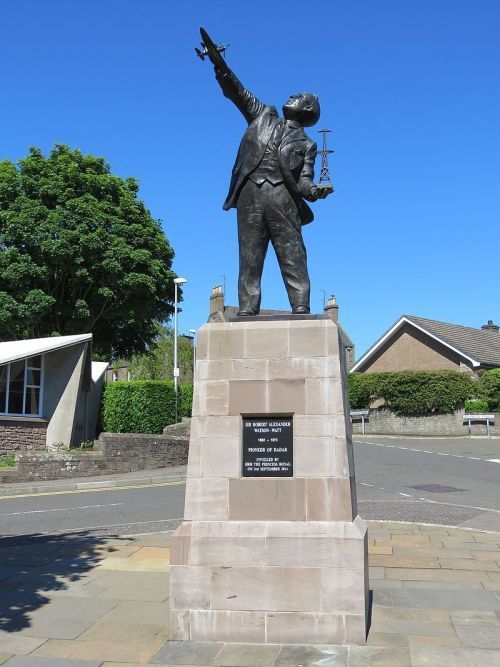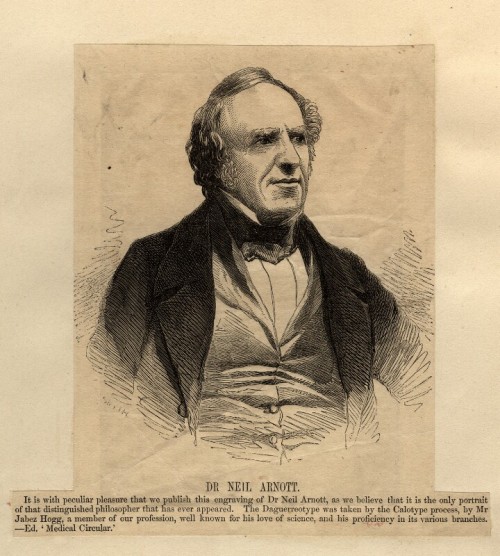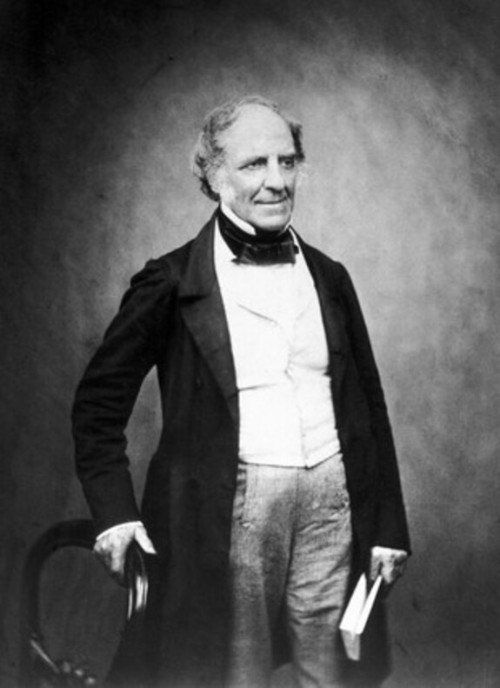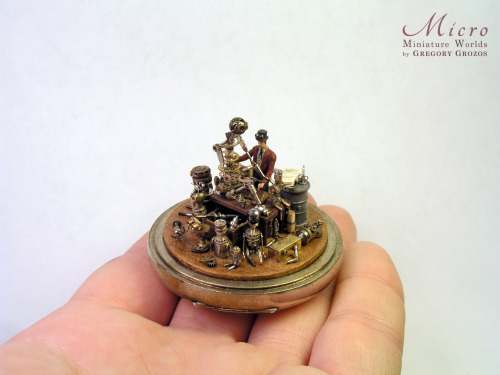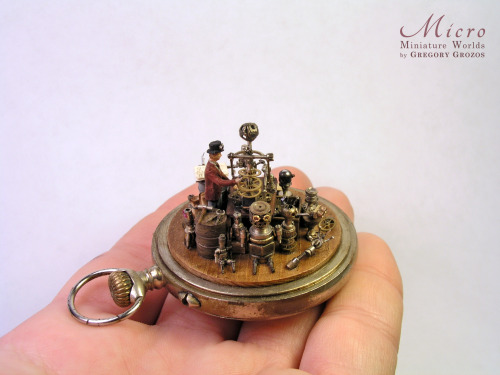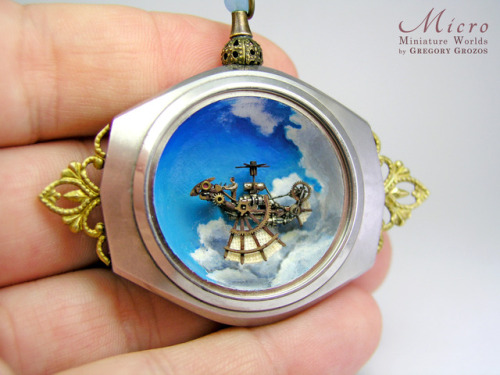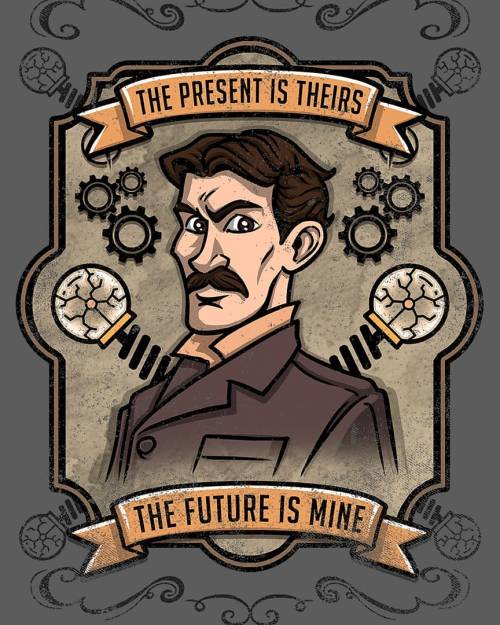#inventor
Robert Watson-Watt was born on 13th April 1892 in Brechin.
Robert had big boots to fill, he claimed he was a descendant of James Watt, although no evidence of any family relationship has been found. But like Watt he went on to make his own important contribution to the world as a pioneer of radar technology.
Although he did not invent the idea of radio detection, Watson-Watt was the first to prove it could work on a large scale.
Born the son of a carpenter and cabinet maker, he attended Damacre Road School, where he was awarded the ‘Smart Medal’ as ‘Dux’ (top prize-winner) of Brechin High School.
He went on to study at University College in Dundee, then part of St Andrew’s University. After he graduated with a BSc in Engineering, his professor William Peddie encouraged him to continue to study 'wireless telegraphy’. This was the common name for radio at the time.Watson-Watt was employed as a meteorologist at the Meteorological Office in 1915.
He worked on equipment that could detect thunderstorms, researching how to detect lightning and the signals emitted as it ionises the surrounding air. His research was aimed at giving airmen in fragile aircraft advance warning of potential lightning strikes.
In 1916 Watson-Watt had the idea of using a cathode ray oscilloscope in aircraft to measure and plot electrical signals on a display screen. However, his idea was not realised until 1923.
In 1924 he moved from Farnborough to work at the newly established research centre at Ditton Park near Slough. The research centre joined with the National Physical Laboratory and Watson-Watt took charge of the Radio Department in Teddington, Middlesex.
One of his projects was to investigate radio interference and how it might be used to advantage in wartime. The Air Ministry set up a committee to advance air defences in the UK in 1933. Nazi Germany claimed to possess a 'death ray’, which used radio waves said to be capable of destroying targets in Britain.
Watson-Watt was asked to develop a response to this threat – a ray that could destroy German aircraft before they attacked. He believed such a thing was not feasible. However, he believed he could develop a machine able to detect an aircraft in flight before it was visible.
The pioneering work that Watson-Watt undertook resulted in the design and installation of a chain of radar stations along the East and South coast of England in time for the outbreak of war in 1939. This system, known as Chain Home and Chain Home Low, provided the vital advance information that helped the Royal Air Force to win the Battle of Britain.
Post link
The Scottish engineer James Blyth died on May 15th 1906 in Glasgow.
Us Scots have always been innovators, wind turbines are popping up all over but when Kincardineshire man James Blyth invented a turbine to light his holiday home in Marykirk and offered to light the village street it was the work of the devil.
James Blythe was described as “a true man of science…one who by insight, patient toil, and mechanical ingenuity did much in his day to explain and illustrate many of the facts of physical science.“
Born in April 1839 in Marykirk, Kincardineshire, Blyth was educated at the local Parish school and Montrose Academy before winning a scholarship to the General Assembly Normal School in Edinburgh. After obtaining a BA from the University of Edinburgh, he taught mathematics at Morrison’s academy in Crieff.
After obtaining his MA in 1871, Blyth was appointed Freeland Professor of Natural Philosophy at Anderson’s College in 1880 (now the University of Strathclyde), where he began a research program on the use of wind power for electricity generation and storage. This research culminated in the installation of a cloth-sailed, horizontal wind turbine (as opposed to the now more common vertical wind turbine) at his Marykirk holiday cottage in July 1887.
This was several months before the American Charles F. Brush installed what many mistakenly believe to be the first wind turbine, though Brush’s was considerably larger and included the useful safety feature of an automatic brake to prevent damage in high winds. Blyth’s design was 33 ft in diameter and stored the electricity generated in ‘accumulators’, otherwise known as batteries.
After a lack of success offering his surplus electricity to local villagers, who branded electricity ‘the work of the devil’, Blyth was able to install a larger, much-improved version of his wind turbine at the Montrose Lunatic Asylum, Infirmary and Dispensary, where it ran successfully for 30 years.
In 1891 Blyth presented a paper to the Royal Society of Edinburgh espousing his belief in the benefits of renewable energy sources, particularly wind but also wave energy.
Blyth received an honorary doctorate from the University of Glasgow in 1900 and died in 1906. After the turbine at Montrose Asylum was dismantled in 1914, there would not be another public utility wind turbine in Britain until 1951. However, his legacy today is an important one, as his old college, the University of Strathclyde, conducts world-leading research into wind turbine technology and Scotland seeks to become a world leader in wind energy generation.
So that’s another first for Scotland, the wind turbine.
Post link
The Scottish physician and inventor Neil Arnott was born on May 15th 1788.
Arnott, was born in the north-east Scottish town of Arbroath, he would become a very highly-regarded physician and show an inventiveness unusual for his era.
Misfortunes compelled the father, Alexander, to give up his farm and settle first at Blair and afterwards in Aberdeen. Neil was taught by his mother Ann, and at the parish school of Lunan, and in November 1798 entered Aberdeen grammar school. In 1801 he was entered as a student in the Marischal College, with a small bursary, where he remained during four sessions, and was especially interested by the lectures of Patrick Copland on natural philosophy. He graduated M.A. in 1805, and at once commenced the study of medicine in Aberdeen. He supported himself partly by acting as shop-assistant to a chemist.
By the age of 19 young Neil was a fully fledged surgeon and made two visits to China as surgeon for the British East India Company and then settled in London where his reputation would grow and grow.
He gave lectures at the Philomathic Institution and published these as Elements of physics. Arnott was one of the founders of the University of London, 1836. Within a few years he was made physician to the French and Spanish embassies, and in 1837 he became physician extraordinary to the Queen. He was elected to the Fellow of the Royal Society in 1838. He was a strong advocate of scientific, as opposed to purely classical, education.
Doctor Arnott gifted 2,000 pounds to each of the four universities of Scotland and to the University of London, to promote its study in the experimental and practical form.Of his inventions they included, a Smokeless Fire-place, Chimney-valves, and “Other Means, Old and New of obtaining Healthful warmth and ventilation” But is the final invention I find most interesting, he gave us the first form of waterbed. Dr Arnott’s Hydrostatic Bed, as it was known, had been created to help invalids avoid bedsores. A bath of water covered with rubber-impregnated canvas, and a lighter bedding on top, it worked a treat. The modest Arnott, however, didn’t choose to patent the idea, amazingly the waterbed was not actually patented until 1968 by an American furniture designer Charles Prior Hall, but oor Dr Arnott definitely came up with the idea first.
And so we have another first from a Scot, the waterbed!
Post link
Hello everyone! This is a private commission I made, a miniature robot inventor’s workshop. It is made primarily from watch parts and contains a good deal of tiny objects, tools and details. I built it on a pocket watch case and closed it on top with a glass dome. Enjoy!
Also check my Etsy shop to see some of my other creations:
www.etsy.com/shop/MicroJewellery
Post link
My latest creation, an ultra-tiny robot inventor’s workshop made inside a watch case. The inner diameter of the watch case measures 1.6cm or 0.6’’. All the tiny robots have been made by assembling many tiny watch parts. The inventor is holding tools while working on one of the robot’s inside. Fitted with a chain and closed with a piece of glass on the front, it has been made as a wearable necklace. Enjoy!
Available at my online shop:
www.etsy.com/shop/MicroJewellery
Post link
This one was fun to build. It is an ultra-tiny robot workshop with a man hard at work building and repairing robots. It is made almost exclusively from tiny watch parts. Some of the features, such as the tools on the table, are a little hard to discern. I took most of the pictures without the glass but the final piece is closed with a piece of glass on the front. Enjoy!
Available at my Etsy shop:
www.etsy.com/shop/MicroJewellery
Post link
My latest miniature artwork! A tiny flying machine flying through the skies. It has been made in a vintage watch case and closed on the front with a piece of glass. The machine is made entirely from watch parts as well as a bit of fabric. The background sky has been hand-painted and there is an ultra-tiny man piloting the craft.
Please visit my Etsy to see more of my work:
www.etsy.com/shop/MicroJewellery
Post link

Why is he blushing like that?

Dandelion Garden
Been thinking of doing more cinematic scenes and an attempt was made this day
Here’s the Steampunk OC Poster speedpaint! Hope you enjoy!

Thought I’d try making a sort of movie/webtoon poster-like illustration! Hope you enjoy!

Just a lil doodly-doo. Happy Valentine’s Day y'all!
Attention please, his daughter has something very important to say XD
More personal work. Will post more this week. #drawing #characterdesign #inventions #inventor #robot #remotecontrol #nerd #sketch #nerdgirl #conceptart #kids #artistsoninstagram #dailydoodle
Post link

George Washington Carver. Scientist. Inventor.
James Dewar was born #OnThisDay in 1842.
The Scottish chemist and physicist co-directed the Davy-Faraday Research Lab at the Ri from the end of the 19th Century. He is best known for inventing the Dewar flask aka vacuum flask aka Thermos.

Though he sadly didn’t profit from its widespread popularity, as he didn’t patent his invention before Thermos started using the design ()

Dewar’s flask aided his work into the liquefaction of then-so-called permanent gases like hydrogen and helium, as he could work at temperatures close to absolute zero ❄️

Whilst at the Ri he built machinery to yield high quantities of liquid oxygen, and showed that liquid oxygen and liquid ozone are attracted to the poles of a magnet
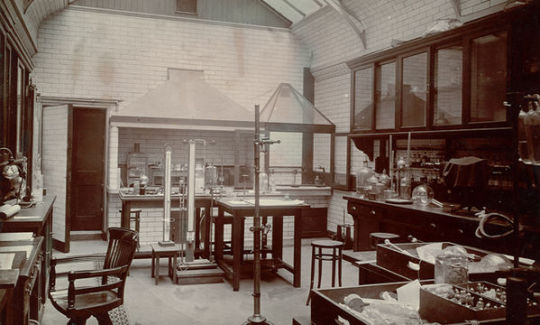
Watch our liquid oxygen magnetism demo here ➡ https://youtu.be/rz57PJToGEs

Dewar created liquid hydrogen for the first time in 1898, solid hydrogen in 1899, and he attempted to create liquid helium in the early 20th century
Click through an interactive version of this photo for a deeper look at his lecture on liquid hydrogen…

He also gave 9 series of Christmas Lectures for children! On topics ranging wide from ‘A Soap Bubble’ to 'The Story of a Meteorite’ to 'The Chemistry of Light and Photography’.
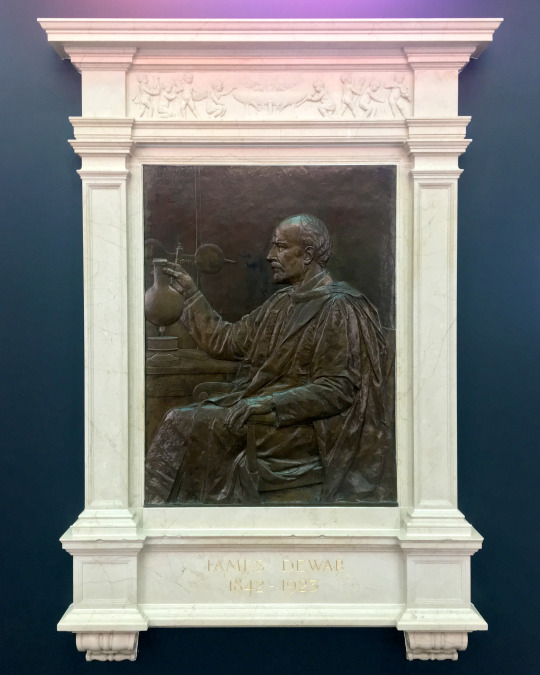
What a guy. Happy Birthday James Dewar
Post link
Oscar H. Banker, born as Asatour Sarafian (1895 – January 1979) was an Armenian American inventor who invented the automatic transmission for automobiles. Considered as the ‘father of automatic transmission’ he was also responsible for the invention of the needle-less inoculation gun, the primary controls of the first Sikorsky helicopter, and power steering.
Sarafyan was born in Kayseri in 1895 in a cave his parents took shelter to escape the Hamidian massacres of the Hamidiye cavalry regiments of the Ottoman Empire, and migrated to the USA in 1914.
Arriving in Chicago as a teenager, Safarian adopted his new name Oscar Banker. His first break through as an inventor happened when General Motors adopted his automatic transmission system after their own semi-automatic system failed due to many flaws.
However his inventions did not stay limited to the automotive industry. During WWII, he invented the primary controls of the first Sikorsky helicopter, which lead to a mass production. He’s also the patent holder of many other inventions.
At the age of 83, Oscar Banker died in 1979, Cleveland Ohio. His memoirs titled ‘Dreams and Wars of an American Inventor: An Immigrant’s Romance’ were published in 1983.
Sources:
- Mouradian, George (1995). Armenian infotext (1st ed.). Southgate, Mich.: Bookshelf
Publishers. ISBN 9780963450920.
- Oscar Banker. WORLDLAB. Retrieved 27 February 2013. The creator of the first practical
automatic transmission for cars and buses.
- Stevens, Monica (August 1, 2010). “The Armenian Community in Michigan”. Examiner.
Asatour Sarafian, inventor of the auto transmission.
- Are Armenians the only victims of 1915? Agos. Retrieved from http://www.agos.com.tr/en/article/10417/are-armenians-the-only-victims-of-1915
#Armenian #american #history #inventor #OscarBanker
Post link
Nurse. Inventor. Two nouns to describe the #STEM wonder that is our first #BlackHistoryMonth highlight – Marie Van Brittan Brown, a New York native who wanted to increase the security of her home and thus created the first home security system herself.
Marie Van Brittan Brown was born and raised in New York City where she resided for the entirety of her life until her passing on Feb 2nd, 1999. Her STEM path began with a nursing career, but she is best known as an inventor.
Working odd & opposite hrs to her husband which left her alone at night, Van Brittan Brown wanted to be able to see who was at her door if she heard knocking. Using peep holes, 2-way microphones, cameras, & a television, Marie invented what became the 1st home security system.
Additionally, her system had a built-in alarm that would allow her to contact police at the push of a button.
The closed-circuit television (CCTV) and security system Marie Van Brittan Brown invented are the foundation of what’s used today. We’re honored to help keep her legacy going through this highlight.
#BlackHistoryMonth #BlackHistoryMonth2021 #WomenInSTEM #BlackandSTEM #Nurse #HomeSecurity #CCTV #Inventor #MarieVanBrittanBrown
https://www.instagram.com/p/CLCe_eEjRLR/?igshid=gplekr1wnuwu
Post link
Check out my new Nikola Tesla design in my shops! https://www.teepublic.com/t-shirt/23851468-the-future-is-mine #nikolatesla #science #scientist #inventor #physics #electricity #steampunk #design #punksthetic #shirts #teeshirts #tees
https://www.instagram.com/p/CS5wL1ns_8d/?utm_medium=tumblr
Post link
✨The Inventor✨
.
.
.
#watercolor #aquarelle #illustration #traditionnalart #inventor #inventeur #feminism #cooljobs #future #hope
https://www.instagram.com/p/CEjNiEyK76z/?igshid=1j7gxljvpgkln
Post link



